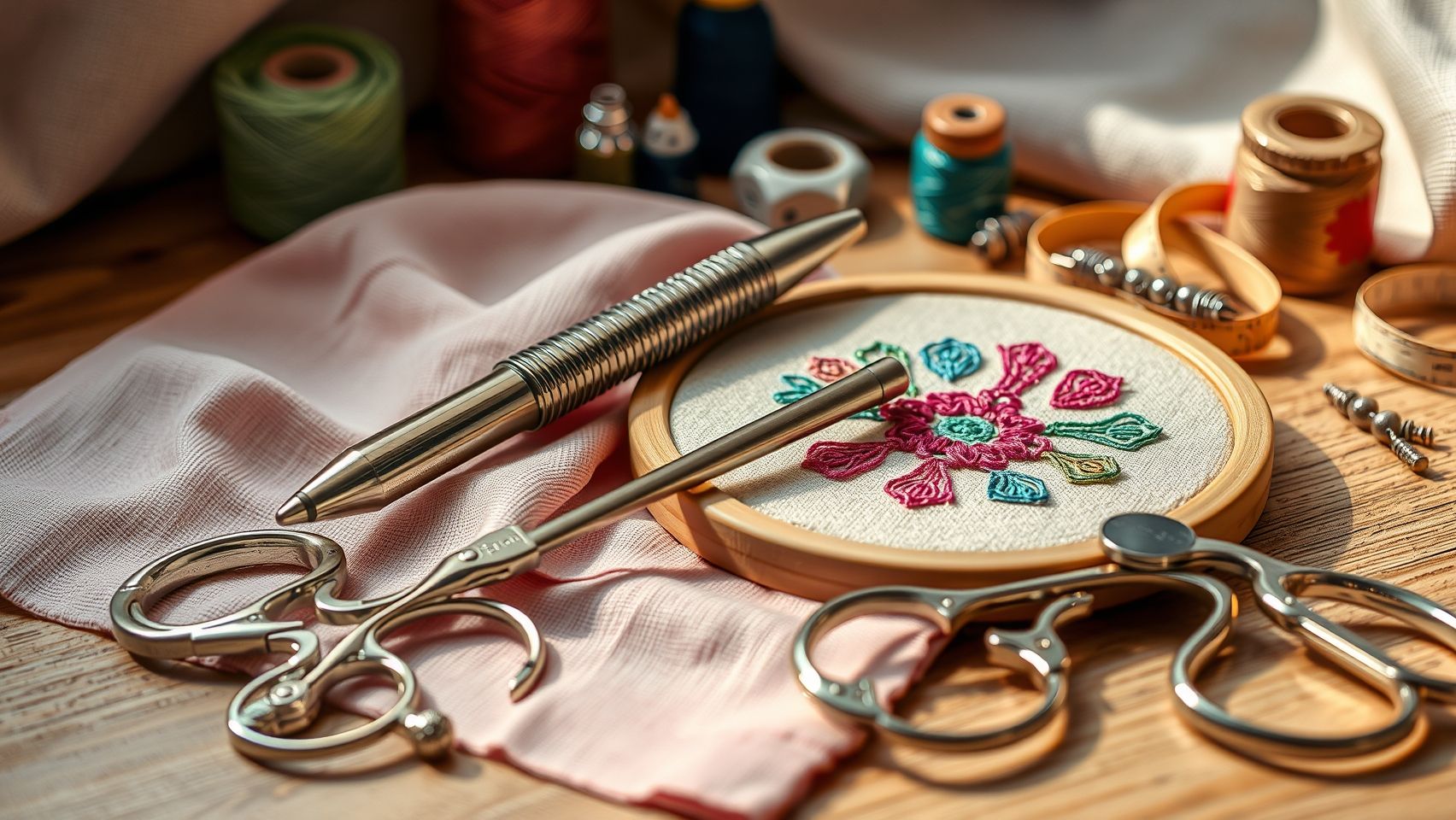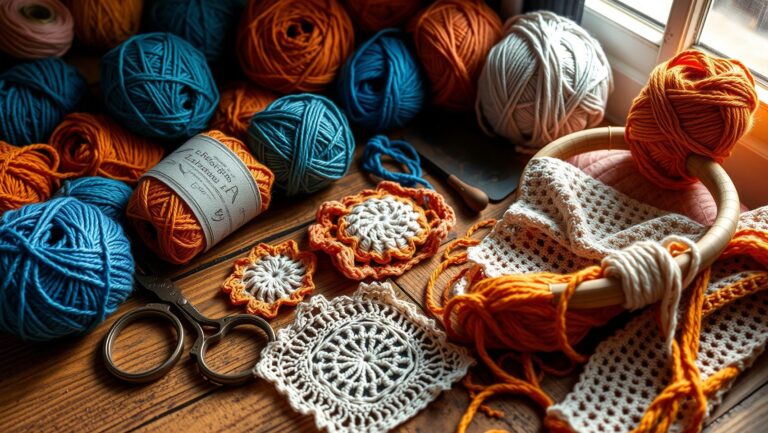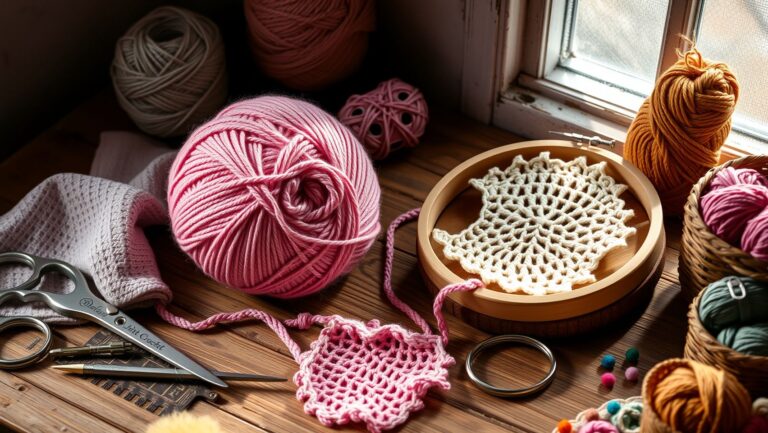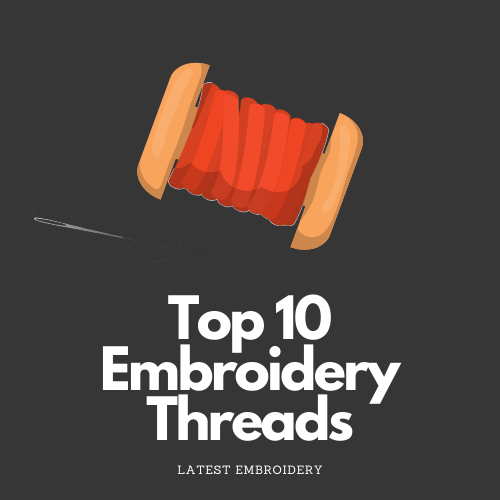Which Punch Needle Needles Are Best for Easy Embroidery in 2025?
Ever struggled with choosing the right punch needle for your embroidery projects? You’re not alone. Many crafters find themselves overwhelmed by the variety of needles, threads, and fabrics available, unsure which combination will give the best results. But fear not—you can simplify your craft with practical, expert-backed tips that help you select the perfect needle setup. In this article, we’ll review the top 5 punch needles for 2025, including real demo videos to show you their performance. Plus, we’ll share quick tips on the best yarns and fabrics to use, making your embroidery smoother and more enjoyable. Whether you’re a beginner or a seasoned pro, finding the right needle can transform your craft. Keep reading for actionable advice that will turn you into a punch needle expert in no time!
What the Latest Research Reveals About Punch Needle Needles

Recent industry insights and market analyses highlight key trends and technological developments in punch needle embroidery needles as we move into 2025. These findings provide valuable guidance for crafters seeking optimal tools for their projects, emphasizing both functional and ergonomic improvements. Additionally, market data indicates shifts in consumer preferences and emerging trends that impact needle selection and project outcomes.
Studies show that the most popular punch needle sizes in 2025 are size 5 and size 8, offering an ideal balance between detail and speed. Size 5 needles are preferred for projects requiring finer, intricate detailing, while size 8 is favored for quicker, textured rug-making or larger artworks. Ergnomically, lightweight handles and softer grips significantly reduce hand fatigue during extended sessions, a crucial factor for both hobbyists and professional artisans. Performance metrics reveal that ergonomic handle designs directly correlate with increased comfort and improved craftsmanship over prolonged use.
Market Trends and Industry Insights
The market research reveals a 20% increase in beginner adoption of punch needle embroidery, driven by its simplicity and rapid results. Industry leaders like Susan Bates, Chenille, and ProPik dominate with pricing ranging from $8 to $25 per needle, offering options for different budgets and project scopes. This growth is supported by trends favoring eco-friendly materials such as organic cotton, hemp, and bamboo, aligning with the broader movement towards sustainable craft supplies.
Technological advancements include the integration of AI in design preparation and improvements in needle ergonomics, enhancing user experience and project precision. These innovations are making punch needle embroidery accessible to a broader audience while elevating the quality of finished pieces. Moreover, contemporary trends favor the use of thicker yarns (#4 weight) with dense fabrics like burlap or denim, expanding potential applications from art pieces to functional textiles.
Overall, current research underscores that selecting the right punch needle involves considering size, ergonomic comfort, material compatibility, and ongoing technological enhancements. Staying informed on evolving industry standards ensures crafters can achieve optimal results efficiently and comfortably in 2025.
Step-by-Step: How to Choose the Right Punch Needle for Your Projects
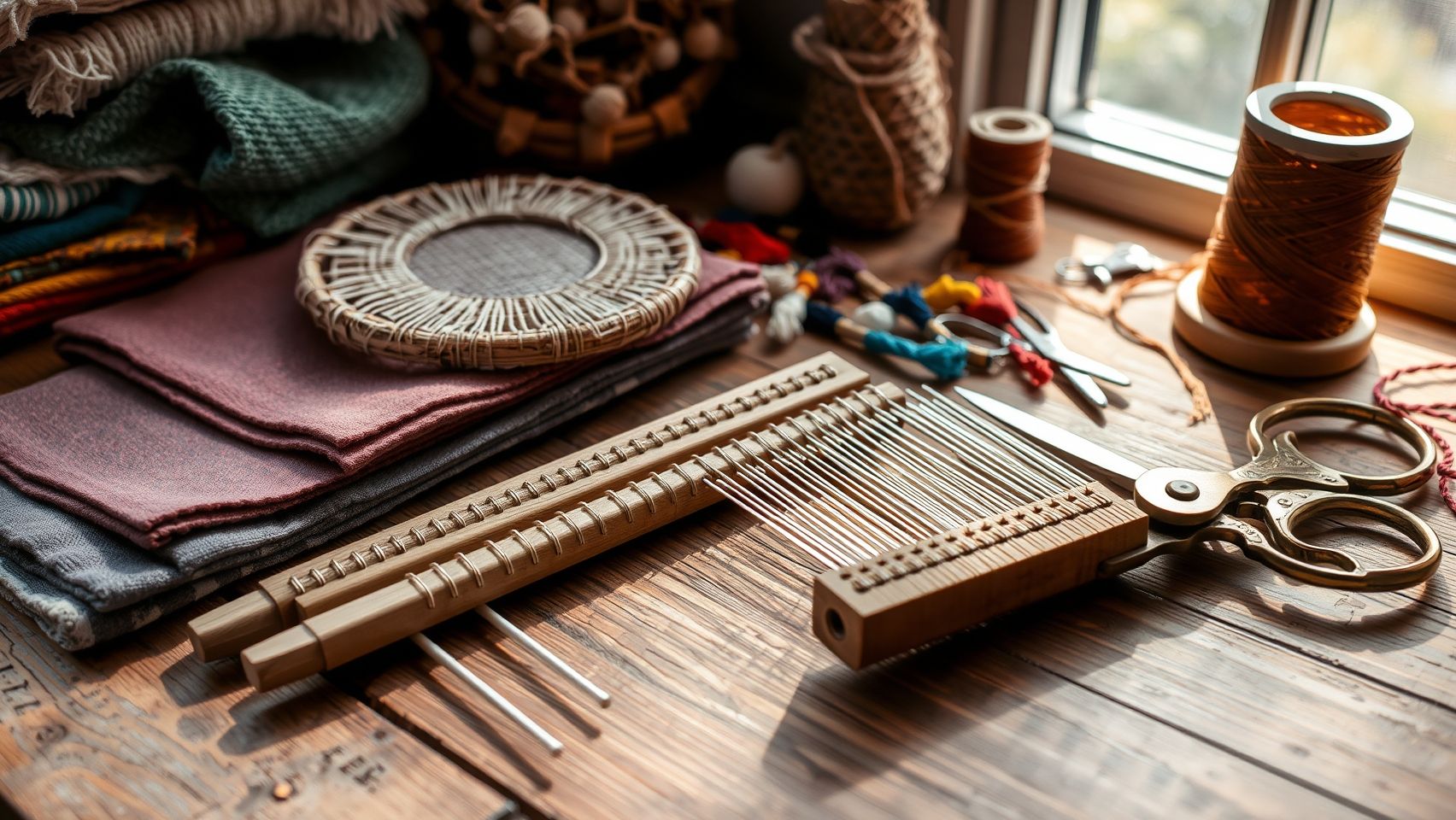
Selecting the perfect punch needle is crucial for achieving beautiful embroidery results tailored to your project’s needs and your personal comfort. With a variety of sizes and ergonomic designs available in 2025, understanding how to evaluate each factor can make your crafting experience more enjoyable and efficient. Follow this structured guide to make informed decisions that elevate your embroidery skills.
Assess Project Size and Detail
The size of your project and the level of detail greatly influence the punch needle choice. Larger needles (size 8-10) are ideal for quick, bold stitches on projects like wall hangings or large decorative pieces. For intricate work requiring fine detail, smaller needles (size 5-6) provide greater precision and control.
Current trends show a shift towards combining bold stitches with delicate accents, making the size selection even more critical. Testing different sizes on scrap fabric can help determine what produces the desired visual effect before committing to your main project.
Evaluate Handle Ergonomics
Comfort during long embroidery sessions depends on the handle design. Look for lightweight models with non-slip grips to prevent hand fatigue and ensure control. Handling different models in-store or during a trial session allows you to assess grip comfort and maneuverability.
Recent industry insights emphasize ergonomic innovations, such as contoured handles and softer materials, to reduce strain. Choosing a punch needle with a handle that fits well in your hand enhances precision and reduces fatigue over extended periods.
Match Needle Size with Yarn Weight
The compatibility between yarn weight and needle size is essential for smooth stitches. Typically, #4 yarn pairs well with size 5-6 needles, providing a balanced tension and stitch consistency. Thicker yarns, such as #8 or #9, require larger needles to accommodate the bulk without damaging the fabric or yarn.
Furthermore, matching the needle with your yarn ensures even stitches and prevents frustration during embroidery. Testing different combinations on sample fabrics like burlap or denim can help you find the optimal pairing for your project.
Set Up Your Workspace
Creating a stable, well-organized workspace is key to successful embroidery. Securing your fabric taut in an embroidery hoop or frame keeps stitches even and prevents puckering. A properly prepared workspace allows for better control of the punch needle and enhances stitch quality.
Investing time in setting up an ergonomic and comfortable environment reduces wrist and hand strain, especially when working on larger projects or detailed designs.
Test Different Needles and Document Your Findings
Before starting your main project, perform sample stitches with various punch needles. Focus on comfort, stitch consistency, and ease of movement. This practice helps identify which needle feels best and produces the desired stitch quality.
Keeping detailed notes on each test—including needle size, handle comfort, and stitch appearance—can streamline future selections. As industry trends evolve, your personalized reference ensures consistent results across different projects and tools.
Research indicates that experimenting with different tools enhances skill development and confidence. By systematically testing and documenting your preferences, you can choose the ideal punch needle tailored specifically to your project needs in 2025.
Tools & Accessories to Enhance Your Punch Needle Experience
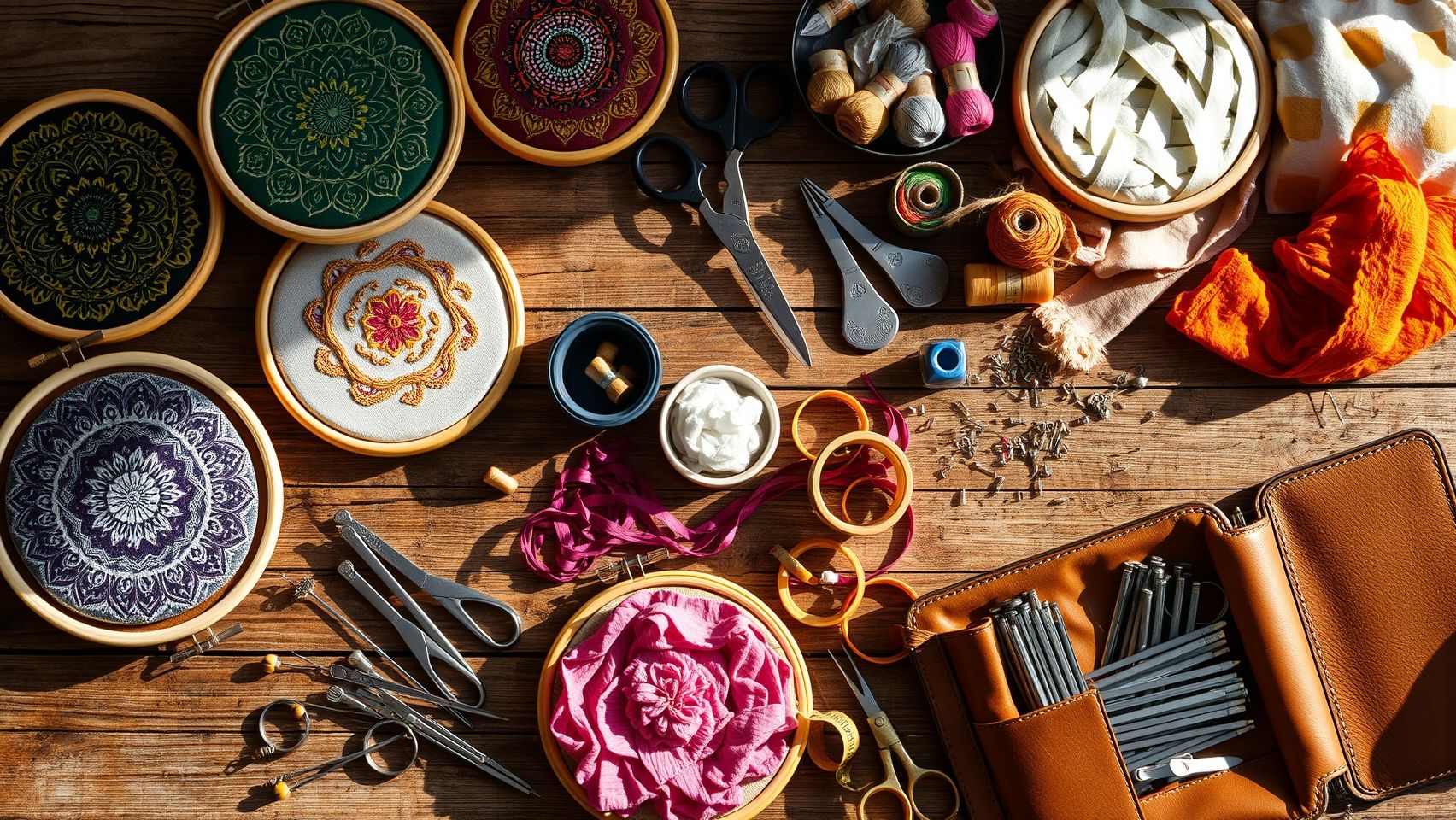
Optimizing your punch needle embroidery workflow in 2025 involves using the right tools and accessories that prioritize comfort, efficiency, and durability. Investing in ergonomic handles, proper framing, and quality materials can significantly improve the quality of your work and reduce fatigue during extended sessions. Additionally, maintaining your tools and organizing your workspace are key steps toward staying productive and avoiding common mistakes.
Essential Tools and Setup Tips
Start with a dedicated punch needle holder or grip that offers ergonomic support. Lightweight, non-slip handles, such as the Chenille handle, help reduce hand strain and provide better control. Selecting an appropriate hoop or frame is equally important; wooden or plastic embroidery hoops with adjustable tension keep the fabric taut, resulting in smoother stitches. This stability minimizes frustrations and enhances stitch precision.
Yarn and thread choice also impact your embroidery quality and environmental footprint. Recommend using #4 weight yarn for a balanced stitch and considering biodegradable threads—like those made from bamboo or recycled fibers—for eco-friendliness. To prepare fabric for no-fray edges, applying a product like Fray Check or similar fabric sealants ensures clean finishes and extends your project lifespan.
Needle Maintenance and Helpful Accessories
Proper cleaning and maintenance prolong the life of your punch needle. After each project, clean the needle with mild soap and warm water, then dry thoroughly to prevent rust. Occasionally, you can use a small brush to clear debris from the eye and tip. Investing in needle threaders simplifies threading, especially for finer needles, and storing extras in a dedicated case keeps your tools organized and accessible.
Additional accessories like grip extensions can improve handling during intricate designs, while a well-organized workspace—well-lit and clutter-free—accelerates your embroidery process and reduces errors. Setting up an optimized station with all essentials within reach transforms your punch needle experience into a more enjoyable and efficient craft.
How to Troubleshoot Common Punch Needle Embroidery Issues
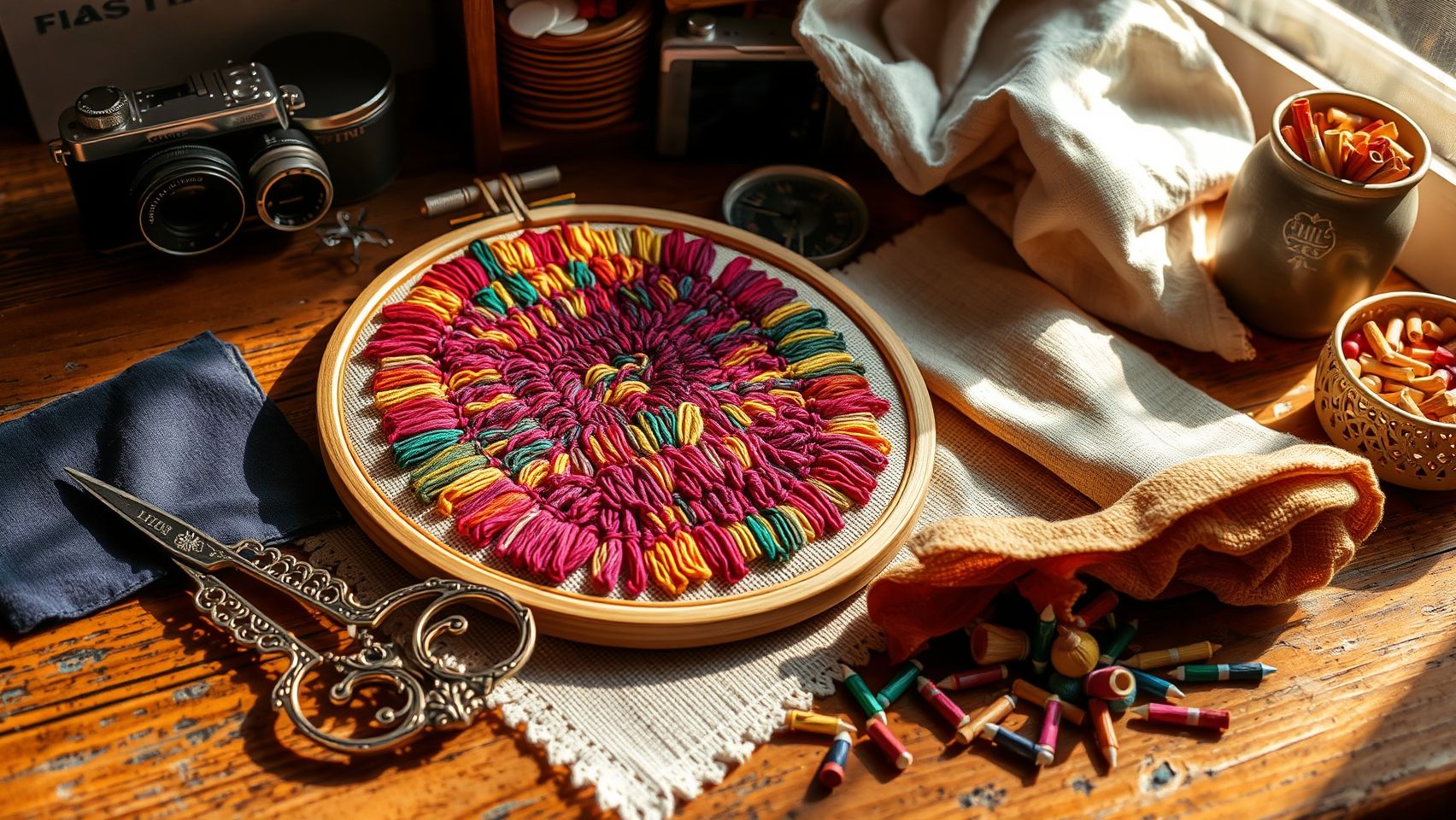
Punch needle embroidery is a rewarding craft that allows for creative expression with minimal equipment. However, beginners and experienced crafters alike may encounter common issues such as skipped stitches, uneven tension, or needle breakage. Quickly diagnosing and fixing these problems can save time and improve the quality of your finished project. This troubleshooting guide provides straightforward, actionable solutions to keep your embroidery smooth and enjoyable in 2025.
Issue: Skipped Stitches
Skipped stitches often occur when the fabric isn’t taut enough or tension settings are off. First, ensure your fabric is securely stretched in the hoop or frame. Tighten the fabric to eliminate slack, which can cause uneven stitching. Next, check your embroidery tension—adjust your machine or hand tension so the stitches are evenly secured without pulling too tight or being too loose. Always test on a scrap piece first, especially when switching fabric types or yarns. Proper fabric tautness and tension adjustment are crucial for consistent stitches.
Issue: Needle Breaking
Needle breakage is frequently caused by using incompatible needle sizes or applying excessive force. Always select the correct needle size for your yarn and fabric weight; thicker yarns need larger needles, while delicate fabrics require smaller needles. Avoid forcing stitches through tough or thick areas—let the needle do the work to prevent stress on the needle shaft. Regularly inspect needles for wear or damage and replace them promptly to prevent unexpected breakage.
Issue: Stitch Unevenness
Uneven stitches can result from inconsistent hand control or mismatched needle types. Experiment with different needle shapes and handle grips to find the most comfortable and controlled grip for your style. Practice maintaining a steady hand and consistent pressure as you stitch. Using ergonomic handles or grips can improve control, leading to more uniform and professional-looking results.
Issue: Yarn Snagging
Yarn snagging often occurs when the yarn isn’t feeding smoothly or the yarn quality is poor. Ensure your yarn feeds freely through the needle—use no-fray, smooth yarns designed for embroidery. Pre-cut your yarn into manageable lengths to prevent tangles and snags. If snagging persists, check that your needle eye is clean and free of debris, and replace any damaged or bent needles.
Issue: Project Slowdowns
Slowdowns happen when workflow isn’t optimized. Pre-cut your yarns and organize your workspace to minimize interruptions. Keep all tools and materials within reach and prepare your yarns in advance for quick access. Speeding up your process reduces fatigue and enhances stitch quality over long sessions.
Additional Tips: Maintaining Equipment and Project Efficiency
Perform regular cleaning of your needles and embroidery machine components to prevent lint buildup that can hinder performance. Replace worn or damaged needles promptly to avoid breakdowns. Well-maintained equipment ensures smooth operation, consistent results, and prolongs the lifespan of your tools. Monitoring yarn compatibility, fabric tension, and equipment condition are key to hassle-free, high-quality punch needle embroidery.
Compare Top 5 Punch Needle Needles: Features, Ergonomics, Value

Choosing the right punch needle embroidery needle can significantly impact your craft experience, especially as the popularity of punch needle embroidery continues to surge in 2025. With a variety of brands offering different sizes, handle designs, and price points, it’s essential for embroiderers to evaluate options based on functionality, comfort, and affordability. Recent industry insights highlight evolving preferences for ergonomic handles and versatile size ranges, catering to both beginners and experienced crafters.
This comparison explores the top five punch needle needles available in 2025, considering their size, handle ergonomics, price, and user feedback. The goal is to assist you in making an informed decision tailored to your project needs, whether creating fine detailed work or large textured pieces.
Brand A: Size 5, Lightweight Handle, Ergonomic Grip
Brand A’s size 5 needle features a lightweight plastic handle with an ergonomic rubber grip, making it ideal for detailed embroidery work. Priced at around $12, users praise it for its precision and ease of use on fine projects, particularly where delicate stitching is required. The ergonomic design reduces hand fatigue during prolonged use, which is significant for intricate designs.
Pros: Excellent for fine detail work, lightweight, comfortable grip, good value. Cons: Limited size options and might be less suitable for larger projects that require thicker needles.
Brand B: Size 8, Thicker Handle, Fast Stitching, $15
Brand B’s size 8 needle has a thicker handle, which provides a sturdier grip, suitable for quicker stitching and larger textures. Favored by beginners, its durability and straightforward design make it accessible for newcomers. The handle’s ergonomic rubber coating ensures comfort, even during extended sessions.
Pros: Robust handle, ideal for speed, user-friendly, good for larger projects. Cons: Slightly heavier, less suited for detailed, fine work.
Brand C: Adjustable Handle, Versatile Sizes, $20
Offering flexibility, Brand C’s adjustable handle seamlessly accommodates multiple needle sizes, making it perfect for diverse stitching needs. Its ergonomic rubber grip provides comfort for long embroidery sessions. The slightly higher price reflects its multifunctional design and durability, favored by professionals working on varied projects.
Pros: Versatile size range, ergonomic comfort, long-term durability. Cons: Higher cost and slightly bulkier design compared to fixed-size needles.
Brand D: Compact, Ergonomic Design, $10
Designed with portability in mind, Brand D features a compact size with a streamlined ergonomic handle, ideal for travel projects or quick crafting sessions. Its lightweight construction adds to user comfort, making it a favorite among crafters who craft on the go. The affordable price point makes it accessible for casual hobbyists.
Pros: Travel-friendly, affordable, ergonomic grip. Cons: Limited size range, less suitable for large, detailed projects.
Brand E: Budget-Friendly, Simple Handle, $8
Targeted at casual hobbyists, Brand E’s needle offers a simple design with a basic handle, priced competitively at $8. Despite its straightforward build, user reviews indicate it performs reliably for small projects and learning purposes. It provides good value for those just starting out or experimenting with punch needle embroidery.
Pros: Very affordable, easy to use for beginners, basic ergonomic design. Cons: Less durable for intensive use, limited size and handle features.
Feature Comparison Chart
FAQs: Choosing Yarn, Fabric, and Basic Tips for Punch Needle Embroidery
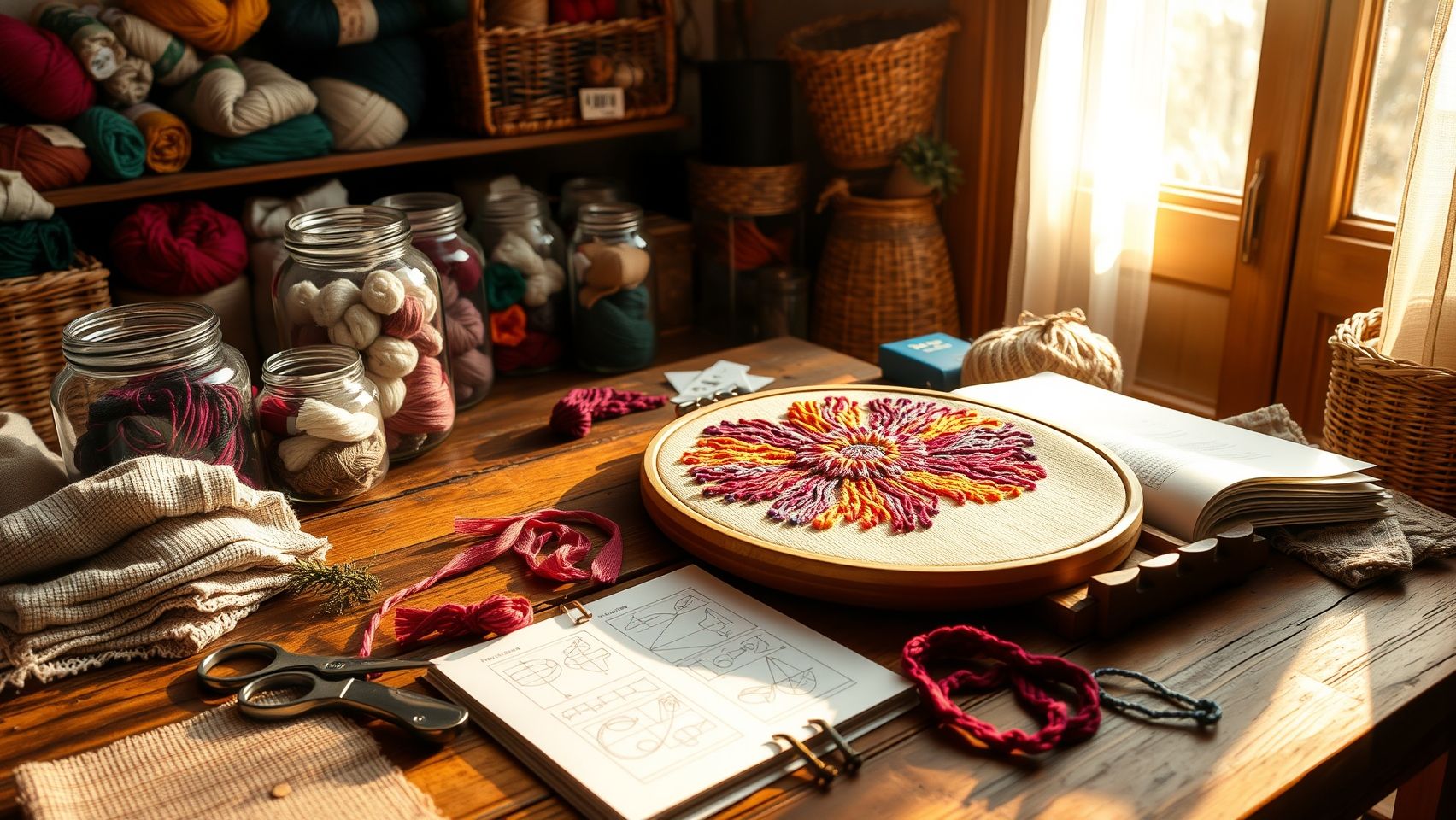
Getting started with punch needle embroidery can be straightforward with the right supplies and techniques. Beginners often ask about the best materials to ensure smooth stitching and durable results. Here, we’ll cover common questions to help you set up your project confidently and achieve beautiful, hassle-free embroidery.
What is the best yarn weight for punch needle embroidery?
For ease of stitching and good coverage, #4 weight yarn is highly recommended. It provides the perfect balance—not too thick to be unwieldy, yet thick enough to create textured, vibrant designs. This weight is versatile, making it ideal for both small details and larger fills, and is widely available from craft suppliers.
What fabrics are easiest for punch needle?
Dense, no-fray fabrics are best suited for punch needle embroidery. Burlap and denim are popular choices due to their firmness, which helps maintain needle stability and prevents puckering. Canvas and rug warp fabrics also provide a solid base for consistent stitches and clean edges.
How do I prevent fabric fraying during punch embroidery?
To protect your fabric, apply no-fray treatments like Fray Check or use stabilizers. Securing raw edges with zigzag stitches or binding helps prevent unraveling during stitching. Starting with backed or pre-treated fabric ensures neat edges and a longer-lasting project.
What is a quick way to learn punch needle stitches?
Practice on scrap fabric using different sample yarns while following video tutorials and demos. Repeating basic stitches builds muscle memory and confidence, making your actual project smoother and more enjoyable. Watching professionals demonstrate techniques can dramatically improve your skills.
Are digital patterns compatible?
Yes, digital patterns can be used for punch needle embroidery. Just make sure to resize the pattern to match your fabric dimensions and adjust for your needle size to ensure accurate and proportionate results.
How much time does a typical project take?
For beginners, small projects like a patch or a simple motif can be finished in 1-2 hours. Experienced crafters working on larger pieces, such as detailed wall hangings, might take several days to complete with consistent effort.
Conclusion
Choosing the right punch needle is essential for achieving satisfying and professional-looking embroidery projects. As highlighted throughout this guide, understanding the importance of matching needle size, ergonomic design, and fabric compatibility can significantly enhance your crafting experience. Additionally, utilizing recommended accessories and troubleshooting common issues ensures smoother stitching and better results. By referring to our top 5 needle comparison and following our step-by-step guides, you’ll gain the confidence needed to make informed choices that elevate your craft.
Don’t wait to start creating beautiful embroidery pieces! Explore our punch-needle starter kits and check out detailed product reviews to find your perfect needle today. Watching our hands-on demo videos will give you real-world tips and inspire your next project. Remember, the right tools combined with patience and practice will turn you into a punch needle pro in no time. Enjoy the process and let your creativity flourish!
